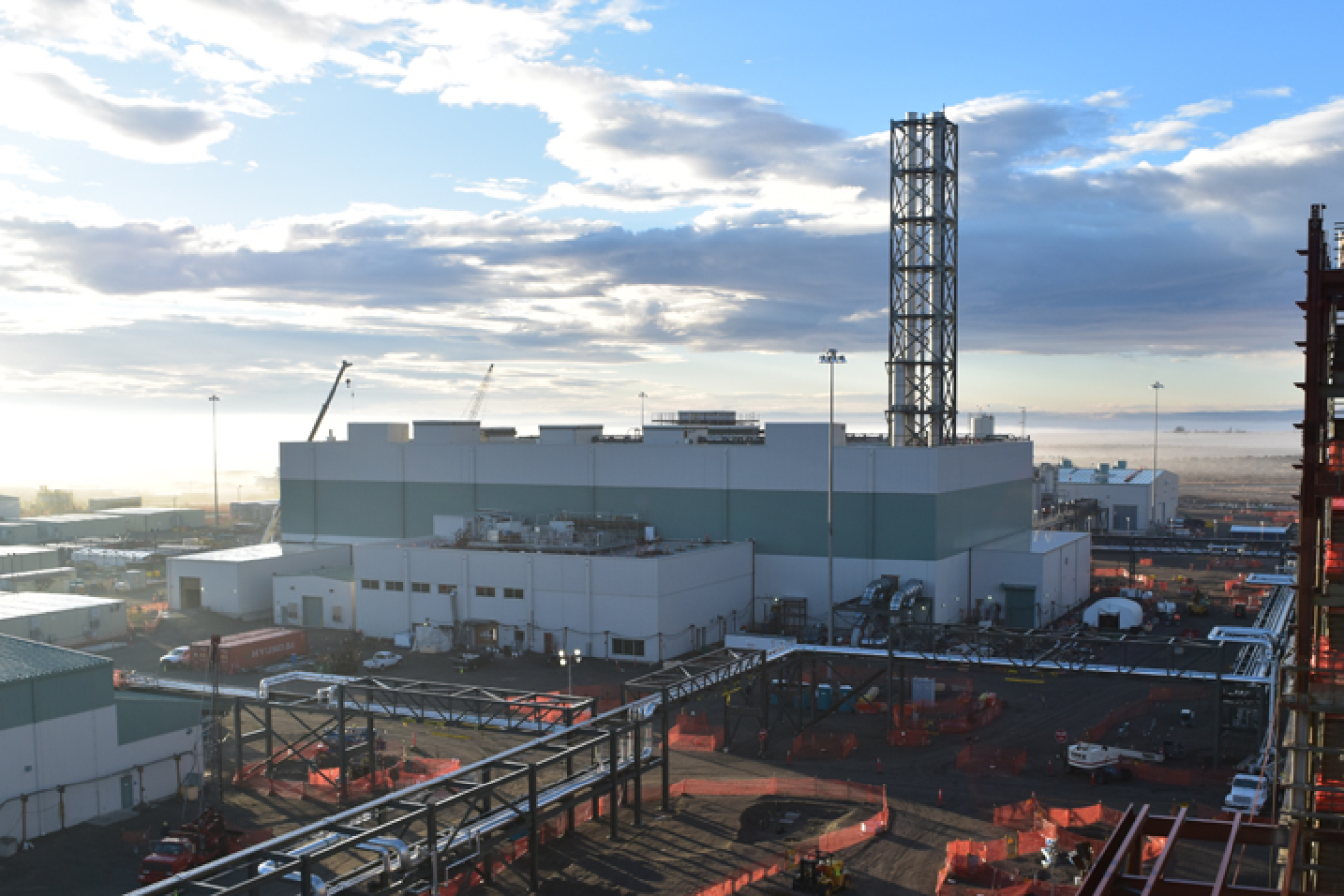The National Academies of Sciences, Engineering and Medicine (NASEM) recently held a public meeting to discuss its third and final report centered on EM’s tank waste cleanup mission at the Hanford Site in Washington state.
Office of Environmental Management
July 18, 2023
A view of the Low-Activity Waste Facility at the Hanford Site. The National Academies of Sciences, Engineering and Medicine recently held a public meeting to discuss its third and final report that reviews the “Follow on Report of Analysis of Approaches to Supplemental Treatment of Low-Activity Waste at the Hanford Nuclear Reservation,” completed by the Federally Funded Research and Development Center, which is led by EM’s Savannah River National Laboratory.
The National Academies of Sciences, Engineering and Medicine (NASEM) recently held a public meeting to discuss its third and final report centered on EM’s tank waste cleanup mission at the Hanford Site in Washington state.
The academies are private, nonprofit institutions that provide expert advice on some of the most pressing challenges facing the nation and world. Their work helps shape sound policies, inform public opinion and advance the pursuit of science, engineering and medicine.
The NASEM report reviews the “Follow on Report of Analysis of Approaches to Supplemental Treatment of Low-Activity Waste at the Hanford Nuclear Reservation,” issued in January. That report was completed by the Federally Funded Research and Development Center (FFRDC), led by EM’s Savannah River National Laboratory (SRNL).
The NASEM report is the third providing a concurrent review of the analysis required by the 2021 National Defense Authorization Act for approaches to supplemental treatment of low-activity waste stored in large underground tanks at the Hanford Site.
“The final National Academies review report documents the committee findings and recommendations from its review of the final Federally Funded Research and Development Center’s report,” said Bill Bates, deputy associate laboratory director for environmental and legacy management at SRNL. “Throughout the multiyear process, the committee provided constructive input to the FFRDC that has been used to strengthen our final report.”
SRNL led the FFRDC team efforts, collaborating with researchers from DOE’s Los Alamos, Pacific Northwest and Sandia national laboratories, as well as the Consortium for Risk Evaluation with Stakeholder Participation, Institute for Defense Analyses, Parsons and TechSource to identify and analyze pathways for treating a portion of the low-activity waste at EM’s largest, most complex cleanup site: Hanford.
In its January report, the FFRDC team recommended multiple pathways for off-site grout solidification and disposal of low-activity waste be secured in parallel with the planned direct-feed low-activity waste vitrification process, which immobilizes the waste in glass.
The FFRDC team report says that, among other benefits, the recommended approach would provide the following:
- The capability to most rapidly reduce the amount of waste stored in Hanford’s underground single-shell and double-shell tanks;
- Additional long-term environmental protection, including two aquifers underlying the site and the Columbia River;
- Reduced potential for individual “choke points” to delay the Hanford tank-waste treatment and disposal mission; and
- Minimized financial demands and reduced mission duration and life-cycle costs.
The FFRDC report notes that only grout-based alternatives allow for the near-term disposition of low-activity waste that achieves the fastest reduction of risk of potential tank leaks. It also notes that grout-based alternatives are clearly executable at benchmark funding levels and have the highest probability of successful completion.
Vitrification, the FFRDC report said, has a lower probability of successful implementation for the supplemental treatment of low-activity waste because it is significantly more expensive than other technologies, such as grout.
The FFRDC report also says that fluidized bed steam reforming — which can convert radioactive liquid waste to a dry, granular mineral product — is a “first-of-a-kind technology” for Hanford and uncertainties in the process, performance and cost are higher than for grout or vitrification.
“The FFRDC team was extremely collaborative and worked well across all aspects of this effort,” said Bates. “We are hopeful that the report will help inform decision-makers and enable them to use the decision framework developed by the team.”
The FFRDC report developed and assessed some alternatives that would use off-site disposal to eliminate concern over additional potential effects on groundwater and the Columbia River from on-site disposal of non-vitrified low-activity waste, noting that about 70% of the inventory of contaminants could be removed from the Hanford Site in some alternatives.
Nearly 56 million gallons of radioactive and hazardous chemical waste remain to be treated at Hanford, and the FFRDC’s efforts provide a framework for decision-makers to develop part of the path toward expediting site closure while reducing risks and costs.
The NASEM report supports the use of that framework, while emphasizing the importance of the future regulatory and permitting processes, and stakeholder input.
To receive the latest news and updates about the Office of Environmental Management, submit your e-mail address.

